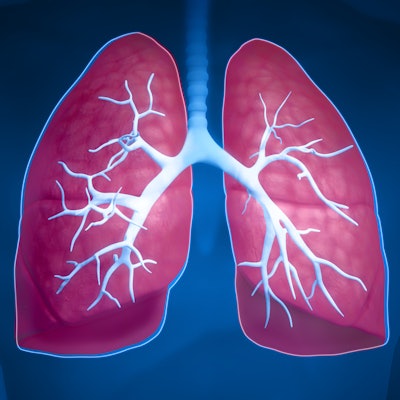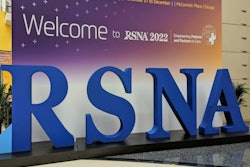
Combining low-dose CT (LDCT) lung cancer screening with a lung nodule detection and reporting program identifies more cancer across a wider spectrum of patients, according to a study published March 8 in the Journal of Clinical Oncology.
A lung nodule screening program reports suspicious lung lesions detected on any kind of imaging -- thus capturing patients at risk for lung cancer who may not have undergone LDCT screening, wrote a team led by Raymond Osarogiagbon of Baptist Cancer Center in Memphis, TN.
"Implementing lung nodule programs may alleviate emerging disparities in access to early lung cancer detection," the group noted.
Despite recent expansions by the U.S. Preventive Services Task Force (USPSTF) and the U.S. Centers for Medicare and Medicaid Services (CMS) of the LDCT lung cancer screening eligibility pool, many people who could benefit from screening are not getting it, the authors noted.
"Current eligibility criteria underestimate the risk in women and racial minorities [and] there is a geographic mismatch between per-capita lung cancer mortality rates and availability of lung cancer screening facilities," they wrote.
Osarogiagbon's team conducted a study called Detecting Early Lung Cancer (DELUGE) that included individuals from the Mississippi Delta who participated in an LDCT program or a lung nodule program; various metrics for these patients were compared to a control cohort of individuals enrolled in Baptist Memorial Health Care's Multidisciplinary Thoracic Oncology Program. The LDCT initiative began in 2015 and was based on USPSTF 2013 eligibility guidance.
The lung nodule program was also established in 2015 and was intended as a safety net for further workup of any imaging studies that identified a problematic lung lesion. The multidisciplinary program was started in 2011 as a consultation group serving referring physicians and includes a variety of radiology and oncology specialists.
The study included 22,886 patients enrolled in the three programs between 2015 and 2021. Of these, data from 5,659 patients was taken from the LDCT program, 15,461 from the lung nodule program, and 1,766 from the multidisciplinary care program. The investigators compared clinical stage of disease, surgical resection rates, three- and five-year survival rates, and eligibility for LDCT screening among the three approaches.
The team found that less than half of the patients diagnosed with lung cancer (46%) would have been eligible for LDCT by the U.S. Preventive Services Task Force's (USPSTF) 2013 criteria, while 54% would have been eligible by the 2021 criteria. But even if all patients eligible for LDCT under the USPSTF's 2021 recommendation had undergone the exam, the lung nodule program would have identified 20% of the stage I and II lung cancer cases in the entire cohort of patients diagnosed with the disease.
| Characteristics of patients diagnosed with lung cancer by program type, based on 2013 USPSTF screening recommendations | |||
| Characteristic | Multidisciplinary program | Lung nodule program | LDCT program |
| Patients diagnosed with lung cancer | 1,139 (65%) | 772 (5%) | 156 (3%) |
| Patients diagnosed with stage I or II disease | 44% | 60% | 61% |
| Patients diagnosed with stage IV disease | 29% | 20% | 19% |
| Patients who underwent surgery | 32% | 42% | 47% |
| Aggregate three-year overall survival rates | 49% | 64% | 80% |
| Aggregate five-year overall survival rates | 44% | 60% | 76% |
As well, compared with the LDCT program, lung nodule program participants diagnosed with lung cancer were more likely to be Black (27% compared with 16%), uninsured (4% compared with 1%), and to have quit smoking (40% compared with 28%).
Finally, lung cancer screening eligibility increased across all three programs with the 2021 USPSTF recommendations, the group found.
| LDCT lung cancer screening eligibility across three programs, all patients | ||
| Program type | 2013 criteria | 2021 criteria |
| LDCT | 80% | 83% |
| Lung nodule | 11% | 15% |
| Multidisciplinary | 32% | 41% |
The study results demonstrate how LDCT screening and lung nodule programs can complement each other -- and thus increase patient access to early lung cancer detection and treatment across a range of populations with varying types of risk, according to Osarogiagbon and colleagues.
"[Our research] reveals great complementarity between LDCT and Lung Nodule Programs, tandem deployment of which can extend the possibility of early detection of lung cancer to a wider spectrum of the population than LDCT alone," they noted. "The programs reached different demographic segments of the population, potentially providing a means of overcoming the looming problem of access disparity to lung cancer screening, which threatens to widen racial, sex, and socioeconomic and geographic disparities in lung cancer mortality."





















